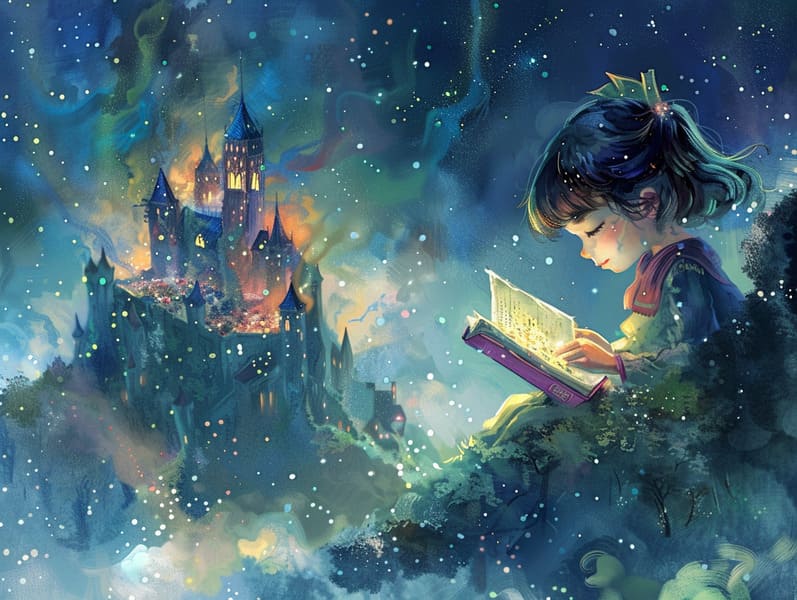The Beginning of Children's Fairy Tales with Their Everlasting Charm.
The Beginning of Children's Fairy Tales with Their Everlasting Charm.
Blog Article

Fairy tales for kids have legendary status. These narratives have been told from one generation to the next centuries before they were ever inscribed. They originated from a variety of backgrounds, including Middle Eastern traditions. They were initially disseminated among elders, often carrying themes and messages relevant to the societal norms and beliefs of the time.
The Brothers Grimm, Jacob and Wilhelm Grimm, were among the first to gather and publish many of these beloved fairy tales. Their anthology, "Grimm's Children's Stories," included narratives like "Ashenputtel," "The Bread Crumb Trail," and "Schneewittchen," which have since become mainstays in the world of beloved fairy tales. Similarly, the Danish author's enchanting tales, such as "The Little Mermaid," and "The Ugly Duckling," have captivated hearts worldwide, cementing their place in the pantheon of treasured fairy tales.
Despite their ancient origins, these tales remain as significant as ever, especially as children's bedtime stories. These whimsical stories are now available in diverse formats, including vibrantly illustrated books, captivating animations, and web-based fairy tales.
Their persistent charm can be linked to several fascinating points:
Crucial Morals: Ancient fairy tales often impart important moral lessons. Narratives like "The Tale of the Boy Who Cried Wolf" teach the virtue of truthfulness, while "The Tortoise and the Hare" highlight the values of resolve and meekness. These tales offer young ones clear distinctions between truth and falsehood, guiding their moral compass in a gentle yet impactful way.
Compassion and Insight: Ancient fairy tales frequently feature personalities facing challenges and struggles, fostering readers to connect with their struggles and root for their triumphs. For instance, "The Tale of Beauty and the Beast" points out the necessity of looking deeper to acknowledge the inner spirit of a character, encouraging compassion and perception.
Cultural Appreciation: Many classic fairy tales are rooted in the cultural contexts from which they developed. Learning from these stories can provide fascinating glimpses into different historical contexts, fostering a sense of world awareness and awareness.
Fantasy and Imagination: The fantastical elements in old fairy tales—enchanted lands—provoke children’s fantastical thinking. These stories move readers to fantasy realms, activating fantasy ideas and a sense of wonder that stays a lifetime.
Classic fairy tales are not only alluring but also didactic. They provide mesmerizing tools in website developing various cognitive and affective skills in young ones. When fairy tales are told out loud, they develop language development by introducing new word meanings and elaborate sentence structures. This practice also advances listening skills and focus, as the young concentrate deeply, eager to see what happens next.
Furthermore, exploring the themes and characters of traditional fairy tales can develop critical thinking and thought processes. Young readers are shown to spot patterns, predict happenings, and comprehend cause and effect. These deliberations also advance the young say their thoughts and feelings, nurturing their emotional intelligence.
In today’s online age, the prevalence of web-based fairy tales has made these fairy tales more attainable than ever. Websites and web apps share extensive collections of classic fairy tales that can be read or played anytime, anywhere. Fairy tales told out loud are particularly well-liked, sharing an enjoyable way for kids to savor these charming stories. Read-aloud books and voiced videos guide characters and settings to life, often supplemented by magical sound effects and instrumentals that heighten the story journey.
The enduring charm of timeless fairy tales lies in their ability to shift to modern society while keeping their essential themes. Contemporary takes of these stories often present more multicultural figures and modern settings, making them relevant to today’s audience. However, the essential messages of daring, empathy, and justness remain unchanged, continuing to connect with children of all ages.
Old fairy tales also offer a sense of calm and homeliness. They grant access to a tidy narrative with a distinct beginning, middle, and end, often concluding with the solving of conflicts and the triumph of rightness over wrongness. This certainty can be soothing for little ones, spreading a sense of steadiness in an dynamic world.
Traditional fairy tales continue to bewitch and inform new generations, maintaining their fascination and pertinence in modern society. As bedtime stories for kids, they offer a perfect blend of magic and knowledge, furthering moral values, empathy, and creativity. The availability of internet fairy tales and the well-liked nature of fairy tales recited ensure that these classic stories remain acquirable to new generations.
By defending and sharing these fairy tales, we continue to revere the rich tapestry of inventiveness and cultural heritage. Whether you are browsing a colorful picture book, seeing a cyber collection, or listening via an read-aloud book, the mystique of bedtime fairy tales is always within reach. These narratives teach us of the unwavering effect of tales and its ability to bond us across epochs and places.
If you are exploring a gorgeously illustrated book, accessing a online library, or listening via an narrated book, the allure of classic fairy tales is always within reach.
These fairy tales demonstrate of the consistent power of storytelling and its ability to hold us together across time and space, creating a bond that delights and instructs alike.